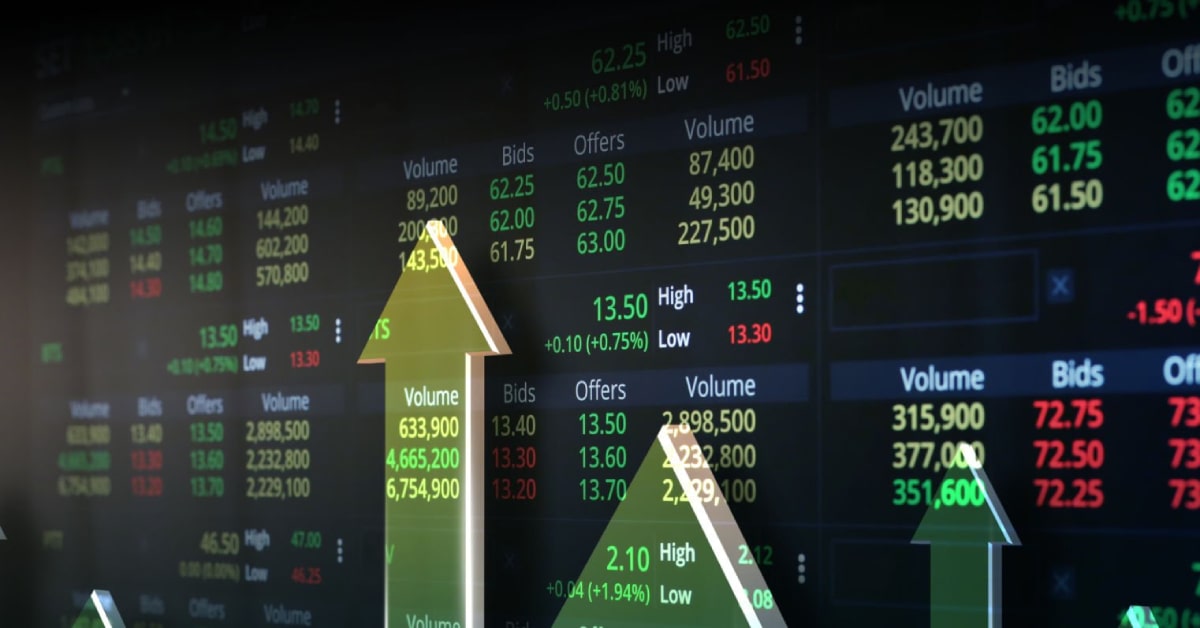- English
- 中文版
The Impact of Price Movements on Global Markets
The Importance of Price Movements
When you delve into the world of finance and trading, you'll soon find that price movements represent shifts in the value of assets, commodity CFDs, and currencies, and these shifts have far-reaching consequences. Price movements can influence everything from the general health of the economy to your personal trading experience.
In the grand scheme of economic activities, price movements serve as valuable indicators of supply and demand dynamics. If prices for a particular asset are rising, it's often a sign that demand is outstripping supply. Conversely, falling prices typically suggest a surplus in supply or a decrease in demand. Understanding these basic principles can provide a solid foundation for your financial decision-making.
Moreover, price movements can serve as a barometer for economic health. Steady, moderate fluctuations in prices are generally viewed as a sign of a healthy, dynamic economy. On the other hand, extreme price movements, either upwards (inflation) or downwards (deflation), can indicate economic instability.
How to Navigate Price Movements in Global Markets
Now that you've grasped the importance of price movements, the question is, how can you navigate them effectively in the global markets? First and foremost, you need to keep abreast with global economic news and trends. This includes staying updated with developments in major economies, as these can have a ripple effect on global markets.
In addition, understanding the nuances of different markets is crucial. For instance, the factors influencing price movements in the share CFDs market may differ from those in the margin FX or commodity CFDs markets. Therefore, deepening your knowledge in your chosen market is essential.
Employing effective risk management strategies is paramount. This includes setting stop-loss orders to limit potential losses and maintaining a disciplined approach to trading, among others. By doing so, you can better protect yourself against the uncertainties inherent in price movements.

The Impact of Time Periods on Price Movements
During periods of economic recession, prices for a wide range of assets tend to fall due to decreased demand. Conversely, during periods of economic growth, prices often rise as demand increases.
Specific times of the day can also impact price movements. For instance, in the share CFD market, prices can be particularly volatile during the opening and closing hours of trading. This is due to the large volume of trades being executed during these periods, which can lead to significant price swings.
It's also worth noting that the impact of time periods on price movements can vary across different markets. For instance, while the share CFD markets operate in specific trading hours, the margin FX market operates 24 hours a day, and hence, price movements can happen anytime during the day or night.
Extreme Price Movements
Extreme price movements, often referred to as 'price shocks', can be caused by several factors. These can range from unexpected economic events, such as a sudden change in interest rates or a major geopolitical event, to market-specific factors such as a change in a company's earnings outlook or a sudden surge or drop in demand for a commodity CFD.
The consequences of extreme price movements can be far-reaching. For investors and traders, they can lead to significant losses or gains. For companies, a sharp rise or fall in their share CFD prices can affect their market capitalisation and potentially their ability to raise capital. For the broader economy, extreme price movements can lead to periods of inflation or deflation, which can have wide-ranging impacts on economic growth and stability.
The Relationship Between Share CFD Prices and Current Prices
Generally, rising share CFD prices are associated with economic growth and optimism, while falling share CFD prices are often seen as a sign of economic downturn or pessimism. But, this relationship isn't always straightforward. For instance, share CFD prices may rise due to factors specific to individual companies or sectors, rather than broader economic trends. Similarly, current prices for goods and services can rise due to factors such as increased production costs or taxes, which may not necessarily reflect the state of the economy as a whole.
The Effect of Price Volatility on Global Markets
Price volatility, or the rate at which prices move, can have a profound impact on global markets. High levels of volatility can lead to increased uncertainty and risk, which can deter investment and hinder economic growth.
On the other hand, volatility can also present opportunities for traders and investors. For instance, traders can profit from short-term price swings.
However, managing the risks associated with volatility is crucial. This includes employing effective risk management strategies.
Conclusion
Whether you're a trader, an investor, or simply interested in the workings of the global economy, understanding price movements can provide valuable insights and enhance your financial acumen. So delve deep, keep learning, and navigate the world of finance with confidence.
Related articles
The material provided here has not been prepared in accordance with legal requirements designed to promote the independence of investment research and as such is considered to be a marketing communication. Whilst it is not subject to any prohibition on dealing ahead of the dissemination of investment research we will not seek to take any advantage before providing it to our clients. Pepperstone doesn’t represent that the material provided here is accurate, current or complete, and therefore shouldn’t be relied upon as such. The information, whether from a third party or not, isn’t to be considered as a recommendation; or an offer to buy or sell; or the solicitation of an offer to buy or sell any security, financial product or instrument; or to participate in any particular trading strategy. It does not take into account readers’ financial situation or investment objectives. We advise any readers of this content to seek their own advice. Without the approval of Pepperstone, reproduction or redistribution of this information isn’t permitted.
